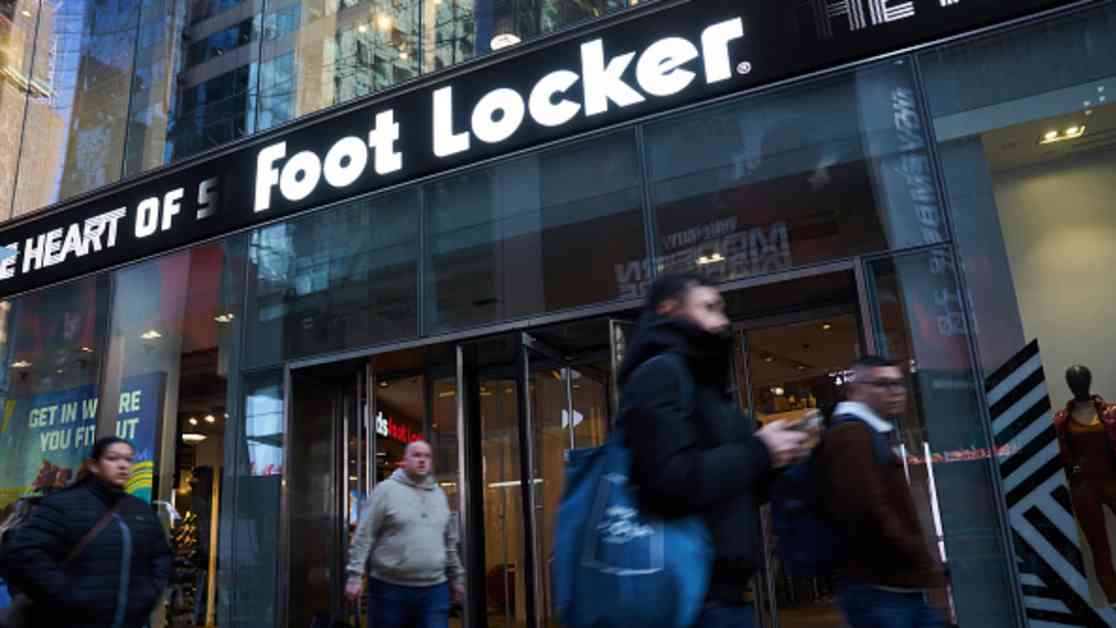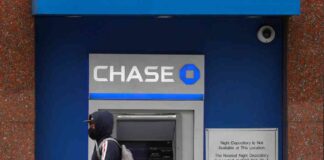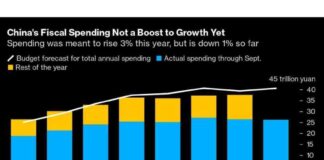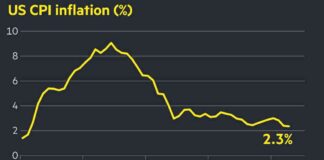Foot Locker, a popular sneaker company, has achieved positive comparable sales growth after six quarters of struggling performance. The company’s efforts to refresh its stores and enhance the customer experience have paid off, resulting in a significant improvement in same-store sales.
Positive Comparable Sales Growth
During its fiscal second quarter, Foot Locker reported a 2.6% increase in comparable sales, surpassing analysts’ expectations of a 0.7% uptick. This growth marks a turning point for the beleaguered company, as it signals a positive trend in its performance. Additionally, Foot Locker’s gross margin expanded for the first time in over two years, indicating a strengthening financial position.
Despite the positive results, shares of Foot Locker dropped approximately 5% in premarket trading. CEO Mary Dillon expressed confidence in the company’s turnaround strategy, known as the Lace Up Plan, stating, “Our top line trends strengthened as we moved through the quarter, including a solid start to Back-to-School. We were also particularly pleased to deliver stabilization in our Champs Sports banner.”
Financial Performance
In the three-month period ending August 3, Foot Locker reported a loss of $12 million, or 13 cents per share, compared to a loss of $5 million, or 5 cents per share, in the previous year. Excluding one-time items, the company posted an adjusted loss of 5 cents per share. Despite the loss, sales increased to $1.90 billion, up approximately 2% from $1.86 billion in the same period last year.
For the current fiscal year, Foot Locker maintained its guidance and expects sales to range from a 1% decline to 1% growth compared to the previous year. This outlook surpasses analysts’ expectations of a 0.4% decline. The company also reaffirmed its adjusted earnings per share guidance, forecasting earnings between $1.50 and $1.70, exceeding analysts’ projections.
Strategic Initiatives
Under the leadership of CEO Mary Dillon, Foot Locker has undergone significant transformation to remain relevant in the evolving retail landscape. Dillon has focused on strengthening the company’s relationship with key brand partner Nike and revitalizing its store fleet. With about 80% of sales conducted in stores, Foot Locker has invested $275 million in upgrading its retail locations through refreshes and remodels.
In an effort to streamline costs, Foot Locker announced the closure of stores and e-commerce operations in South Korea, Denmark, Norway, and Sweden. Additionally, the company will rely on a third-party operator for operations in Greece and Romania. This strategic shift aims to optimize Foot Locker’s presence in key markets and enhance operational efficiency.
Furthermore, Foot Locker plans to relocate its global headquarters from New York City to St. Petersburg, Florida, by late 2025. This move is intended to foster collaboration among teams and reduce costs. The company will maintain a limited presence in New York City, reflecting its commitment to operational excellence and financial sustainability.
Champs Sports Revitalization
Foot Locker’s Champs Sports banner, which has previously underperformed, showed signs of improvement during the quarter. Comparable sales declined by 3.9%, a significant improvement from the 25.3% decrease reported in the same period the previous year. This positive momentum demonstrates the effectiveness of Foot Locker’s revitalization efforts across its brands.
As Foot Locker focuses on enhancing stores, products, and the overall customer experience, the company continues to drive sales amidst economic challenges such as inflation and high interest rates. CEO Mary Dillon’s strategic initiatives have resonated with consumers, positioning Foot Locker for sustained growth and profitability in the long term.
In conclusion, Foot Locker’s recent success in achieving positive comparable sales growth reflects the company’s commitment to innovation, customer-centricity, and operational excellence. By leveraging strategic initiatives and revitalizing its brand portfolio, Foot Locker is poised for continued success in the competitive retail landscape.






















